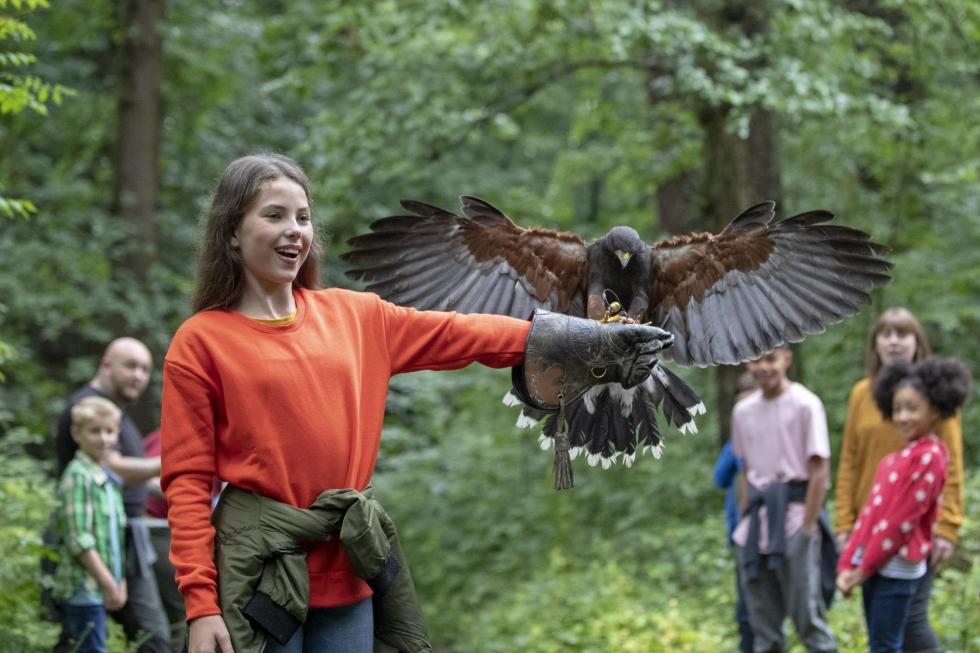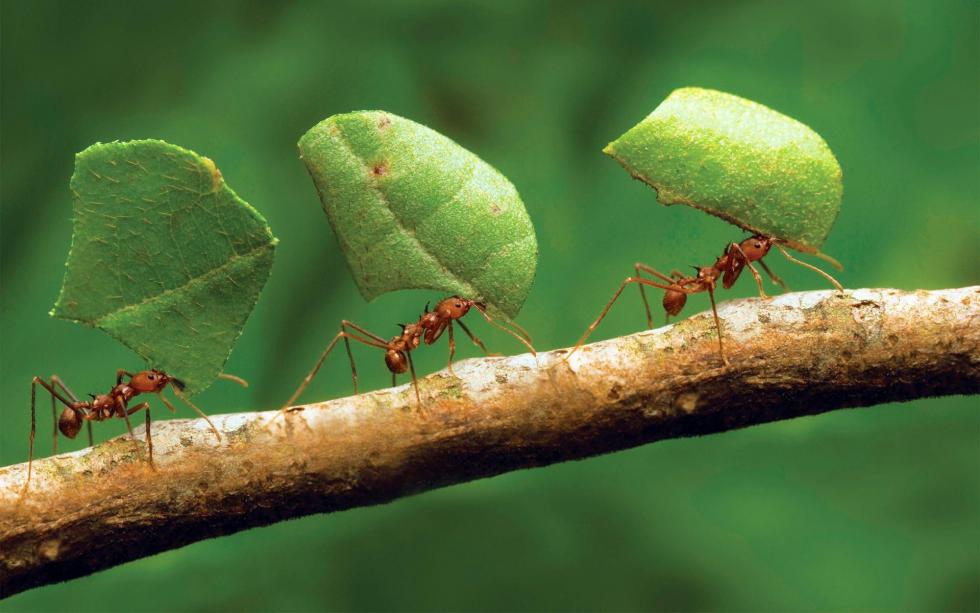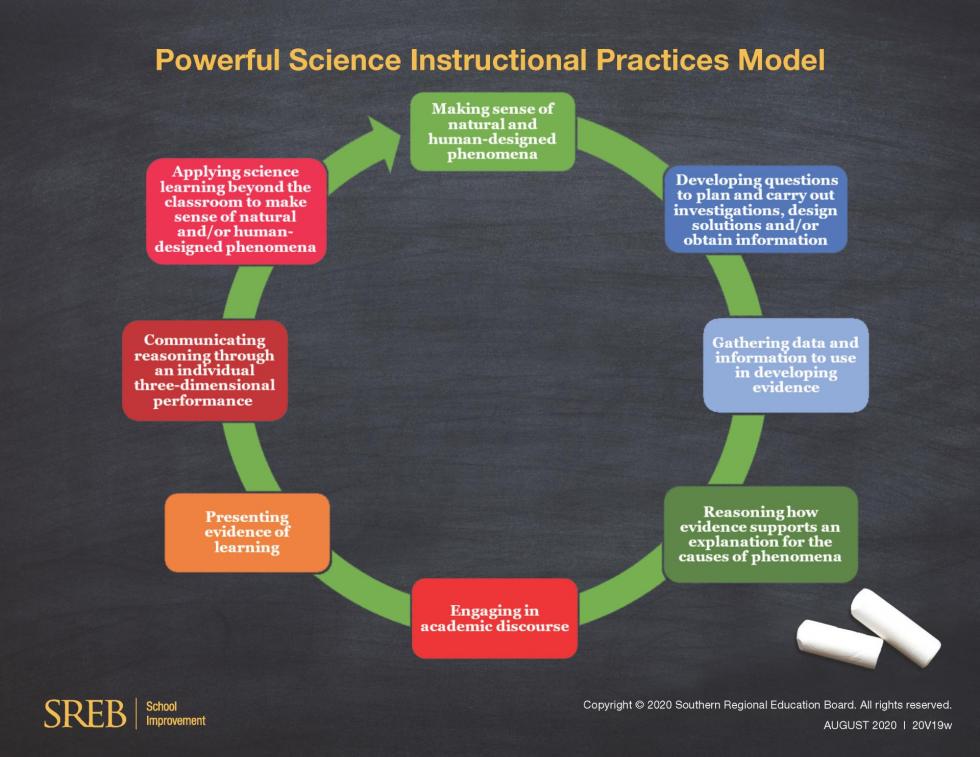Get Students Pumped Up About Science
 Students are surrounded by the world of science and
they often don’t even know it. SREB’s Leslie Eaves shares how to
make science come alive for students with our Powerful Science
Instructional Practices and the National Geographic Society’s
rich library of curricular and instructional resources.
Students are surrounded by the world of science and
they often don’t even know it. SREB’s Leslie Eaves shares how to
make science come alive for students with our Powerful Science
Instructional Practices and the National Geographic Society’s
rich library of curricular and instructional resources.
Students are surrounded by the world of science, from the natural environment they live in, to the smartphones they constantly use, to their own changing anatomy and physiology — and they often don’t even know it. Many think of science as just another required course. As educators, we want science to be more than words on a page or isolated experiments for our students. We want to make science come alive for them. We want our students to develop a scientist’s eye for looking at the world and understanding its complex, interconnected nature.
To develop an explorer’s mindset, students need to experience science and do the work of scientists. SREB and the National Geographic Society have teamed up to provide students with rich instructional and exploratory learning experiences. SREB’s Powerful Science Instructional Practices provide a framework for planning engaging standards-based instructional units. National Geographic’s rich library of curricular and instructional resources gives teachers a starting point for turning ideas into opportunities for exploration and inquiry in the classroom and the community.
Inquiring Minds
SREB’s Powerful Science Instructional Practices go beyond day-to-day teaching strategies: As our instructional model demonstrates, the PIPs actively engage students in the mindsets and many tasks scientists take on. In the first half of the model, students observe and make sense of natural or human-designed phenomena. Based on their observations, students develop questions and pursue potential answers by investigating, collecting data, obtaining evidence and developing scientifically reasoned statements in response to their questions.
An inquiry-based classroom requires teachers to shift from a demonstration style of teaching to an exploratory style of science education. Instead of completing prescribed labs, students develop their own investigations in response to scientific questions, so they gain a deeper scientific understanding of a concept.
Developing an Explorer Mindset
The National Geographic Society’s Resource Library houses hundreds of lessons, units, activities and supplemental materials like articles, maps, photographs and videos that help students develop what National Geographic calls an “Explorer Mindset” and help teachers design engaging, standards-based lessons. Say, for example, that an Alabama elementary school teacher needs to design a unit that aligns with the state’s fifth-grade science standards. She could use National Geographic’s Schoolyard BioBlitz lesson to target these two state standards:
- Construct and interpret models (e.g., diagrams, flow charts) to explain that energy in animals’ food is used for body repair, growth, motion and maintenance of body warmth, and was once energy from the sun.
- Create a model to illustrate the transfer of matter among producers and consumers, including scavengers, decomposers and the environment. (Science – Grade 5)
 In the Schoolyard BioBlitz lesson,
students grab clipboards, pencils and magnifying glasses and go
into the school grounds or a nearby nature area to observe plants
and animals, then connect their observations to life science
standards. The teacher assigns groups of students to different
sections of the schoolyard and asks them to observe this natural
habitat by sketching what they see, collecting leaf samples and
describing the behaviors of the creatures they encounter, such as
“large bird in a tree” or “ants carrying leaves in a straight
path.” When they return to the classroom, the teacher asks each
group to take turns sharing and commenting on their observations
to the whole class. This last step incorporates academic
discourse, a key component of SREB’s Powerful Science
Instructional Practices.
In the Schoolyard BioBlitz lesson,
students grab clipboards, pencils and magnifying glasses and go
into the school grounds or a nearby nature area to observe plants
and animals, then connect their observations to life science
standards. The teacher assigns groups of students to different
sections of the schoolyard and asks them to observe this natural
habitat by sketching what they see, collecting leaf samples and
describing the behaviors of the creatures they encounter, such as
“large bird in a tree” or “ants carrying leaves in a straight
path.” When they return to the classroom, the teacher asks each
group to take turns sharing and commenting on their observations
to the whole class. This last step incorporates academic
discourse, a key component of SREB’s Powerful Science
Instructional Practices.
Another National Geographic lesson shows students how to examine their BioBlitz data. After sharing and documenting their observations, students develop probing questions based on those observations with teacher support. Their questions then help structure additional classroom lessons focused on understanding how plants and animals get energy to survive.
Understanding Observations
National Geographic also provides grade-level appropriate articles, encyclopedia entries, infographics and other multimedia resources. For the BioBlitz unit, a teacher asks students to read, discuss and answer questions using this infographic on Energy Flow in an Ecosystem. As students pull critical information from the infographic, they return to their original observations to label and diagram sources of energy and how plants and animals use them. For example, how might “ants carrying leaves in a straight path” connect to matter transfer within this system? As students develop their own model of how energy and matter flow within the ecosystem that exists around their school, they not only develop a richer understanding of scientific concepts, but also are more likely to recall that information and the engaging experience they had months, or even years later, and extend and apply that information to other ecosystems they encounter.
Learn More
To learn more about SREB’s partnership with National Geographic and how you can participate in a free professional learning series on inquiry-based learning, contact Leslie.Eaves@sreb.org.
This article was originally featured in the February 2022 issue of our Promising Practices Newsletter.


